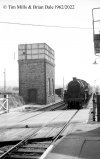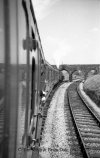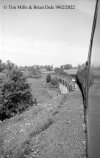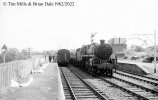oldravendale
Western Thunderer
Thank you Tim @timbowales for correcting the loco number. I was feeling rather smug having just done the same thing myself on another picture so I really should have found this. The original commentary has now been edited and corrected. And then Dave @Dave Holt for enlarging the details of the picture which actually is 75023.
John @John Palmer . Once again you are providing so many details in your posts about which I had no prior information. Please keep the extra details coming on these S & D photos but thereafter any others where you may have a comment. I'll not remark on each individual detail but they add so much to the descriptions and are carefully preserved in the Properties/Details attached to each photograph. Also to Tony @76043 and Martin @Martin Shaw for extending the debate. Thanks too, Martin for the additional info on 75071. Just in the interests of accuracy can I check that the range of numbers you are describing should be 75065 - 75079 and not 75065 - 75059? All to be included in the details. If you can come back to us about that distant signal when you've checked and to which you refer to in post #3940 it'll be appreciated.
Standard Class 4 4-6-0 75073 approaching Evercreech Junction on the 12.20 to Bath Green Park on 9th June 1962. The loco was allocated to Bath Green Park in April 1957 and moved to Templecombe in November 1962 where it was withdrawn in January 1966 (SLS), going to T W Ward, Ringwood for disposal which was complete in April 1966. (BR Database).

The view from the train leaving Evercreech on 9th June 1962. The identity of the locomotive is unknown but it looks as though it might be a Standard Class 4 4-6-0.

Another view from the same train between Evercreech and Shepton Mallet on 9th June 1962.

Standard Class 5 73051 passing through Chilcompton on a Bath Green Park to Bournemouth West train on 9th June 1962. The loco was allocated to Bath Green Park when new in 1954 and spent it’s entire life there going in to store in early August 1965 and being withdrawn later the same month. (SLS). It was scrapped at Cashmore’s, Newport, in November the same year. (BR Database).

Brian
John @John Palmer . Once again you are providing so many details in your posts about which I had no prior information. Please keep the extra details coming on these S & D photos but thereafter any others where you may have a comment. I'll not remark on each individual detail but they add so much to the descriptions and are carefully preserved in the Properties/Details attached to each photograph. Also to Tony @76043 and Martin @Martin Shaw for extending the debate. Thanks too, Martin for the additional info on 75071. Just in the interests of accuracy can I check that the range of numbers you are describing should be 75065 - 75079 and not 75065 - 75059? All to be included in the details. If you can come back to us about that distant signal when you've checked and to which you refer to in post #3940 it'll be appreciated.
Standard Class 4 4-6-0 75073 approaching Evercreech Junction on the 12.20 to Bath Green Park on 9th June 1962. The loco was allocated to Bath Green Park in April 1957 and moved to Templecombe in November 1962 where it was withdrawn in January 1966 (SLS), going to T W Ward, Ringwood for disposal which was complete in April 1966. (BR Database).

The view from the train leaving Evercreech on 9th June 1962. The identity of the locomotive is unknown but it looks as though it might be a Standard Class 4 4-6-0.

Another view from the same train between Evercreech and Shepton Mallet on 9th June 1962.

Standard Class 5 73051 passing through Chilcompton on a Bath Green Park to Bournemouth West train on 9th June 1962. The loco was allocated to Bath Green Park when new in 1954 and spent it’s entire life there going in to store in early August 1965 and being withdrawn later the same month. (SLS). It was scrapped at Cashmore’s, Newport, in November the same year. (BR Database).

Brian





















